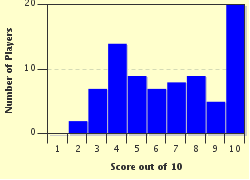Quiz Answer Key and Fun Facts
1. Blake, Wordsworth, Coleridge, Byron, Shelley and Keats are sometimes called the Big Six English Romantic poets. Who was the youngest?
2. Charles Cowden Clarke described 5th May, 1816 as the red letter day in the life of his friend, John Keats. Why?
3. John Keats was condemned as a member of "The Cockney School" of poets. Who coined that derogatory phrase?
4. 'Bright Star' was a famous love sonnet by Keats. To whom was the poem addressed?
5. John Keats is renowned today as a writer of odes. How many odes did he write?
6. "Beauty is Truth, Truth Beauty" is considered to summarise Keatsian aesthetics. In which poem did John Keats write the line?
7. 'Ode to Psyche' is believed to be the first ode written by John Keats. Who is Psyche?
8. 'Here lies one, whose name was writ in water' is the epitaph of John Keats. He asked his friends to inscribe these words in his tomb. From where did he get the inspiration for this inimitable sentence?
9. John Keats died of tuberculosis. It was called the most 'Romantic disease' at that time. What was another name for tuberculosis?
10. After the untimely death of Keats, Shelley wrote an elegy on him. What was the title of that famous elegy?
Source: Author
indranil49
This quiz was reviewed by FunTrivia editor
bloomsby before going online.
Any errors found in FunTrivia content are routinely corrected through our feedback system.

